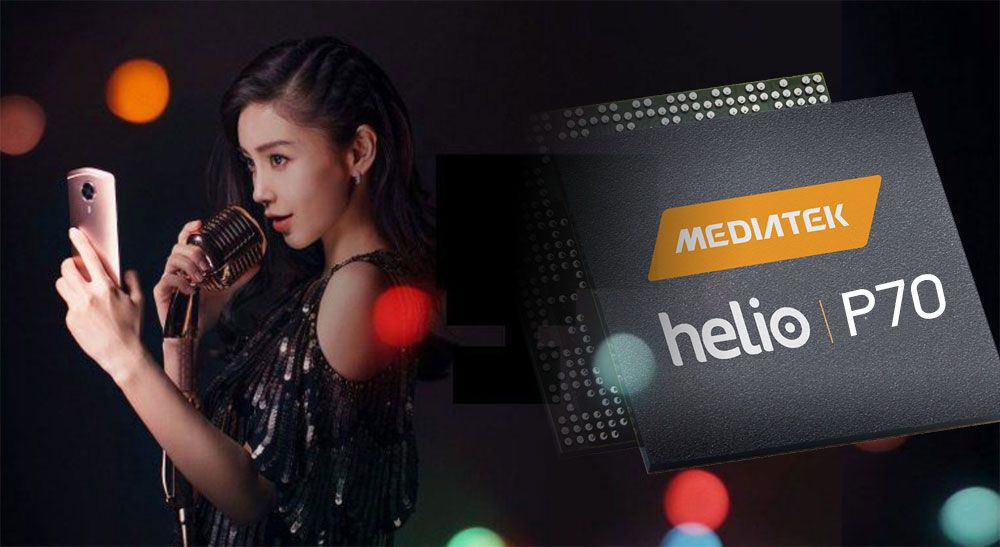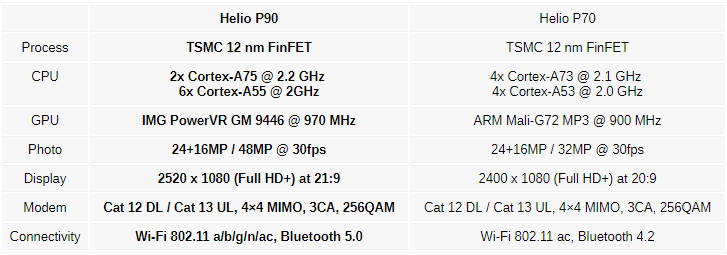

- Helio p70 vs helio p90 full#
- Helio p70 vs helio p90 android#
- Helio p70 vs helio p90 Bluetooth#
- Helio p70 vs helio p90 series#
And a 32MP camera on the front for selfies.

In the camera department, the Oppo Reno Z sports a dual camera set up on the rear (48MP primary Sony IMX586 sensor with 0.8um pixel size, f/1.7 aperture, PDAF, and CAF + 5MP secondary with f/2.4 aperture) with LED flash.
Helio p70 vs helio p90 android#
The smartphone runs on ColorOS 6.0 based on Android 9 Pie and has a massive 4035mAh battery with VOOC 3.0 fast charging to power everything.
Helio p70 vs helio p90 Bluetooth#
For connectivity, it has dual 4G VoLTE, WiFi 802.11ac (2.4GHz + 5GHz), Bluetooth 5, GPS/GLONASS, NFC, and USB Type-C. It comes with an in-display fingerprint sensor for authentication, and also includes a 3.5 mm audio jack, Hi-Res audio, and Dolby Atmos. At its core, the Reno Z is powered by a 12nm-based Octa-Core MediaTek Helio P90 processor with IMG PowerVR GM 9446 GPU, paired with 6GB / 8GB of LPDDR4X RAM and 128GB / 256GB of storage.
Helio p70 vs helio p90 full#
And a 6.4-inch 2340 × 1080 pixels screen resolution Full HD+ 19.5:9 AMOLED HDR display on the front.
Helio p70 vs helio p90 series#
mobile brand about using the P90, so we can expect an announcement during MWC in February.In terms of design, the Oppo Reno Z sports a similar design language to the other Reno series smartphones, with the 3D curved glass body with Aluminum mid-frame and the same O-Dot point on the rear to protect the device’s camera lens. The Helio P70 is in production now, and is expected to be available in smartphones in the first half of 2019. Integrated Wi-Fi 802.11 ac GPS/Glonass/Beidou ANT+, Bluetooth 4.2 /FM GPS + Glonass + Beidou + Galileo, FM radio Integrated Wi-Fi 802.11 a/b/g/n/ac, Bluetooth 5.0, (AI) Facial Detection & Scene Detection Hardware Warping Engine (EIS) Anti-Blooming Engine MEMA 3DNR Multi-Frame Noise reduction Real-time HDR recording and viewing Zig-Zag HDR RAW-domain multi-frame HDR PDAFĢ160p (2160 x 1080), h.264, h.265 / HEVC at 30 fpsĬat-7 DL / Cat-13 UL, 4×4 MIMO, 3CA, 256QAM, HPUE, IMS (VoLTE\ViLTE\WFC), eMBMS, Dual 4G VoLTE (DSDS), Band 71, TAS 2.0Ĭat-7 DL / Cat-13 UL, 2×2 UL CA, TAS 2.0, HUPE, IMS (VoLTE\ViLTE\WoWi-Fi), eMBMS, Dual 4G VoLTE (DSDS), Band 71 (AI) Facial Detection & Scene Detection Hardware Warping Engine (EIS) Anti-Blooming Engine MEMA 3DNR Multi-Frame Noise reduction Real-time HDR recording and viewing Zig-Zag HDR RAW-domain multi-frame HDR PDAFĢ4+16MP or 32MP camera 30fps. It supports 5-person human pose tracking, Full body avatar AR, 3D pose tracking, Multiple object and scene identification, AR/MR acceleration, AI depth engine, Google Lens, ARCore support, Secure and accurate facial recognitionĤx Cortex-A73 2.1 GHz4x 4x Cortex-A53 2.0 GHzĢX LPDDR4x Up to 1800MHz up to 8GB, eMMC 5.1 / UFS 2.1ġX LPDDR3 933MHz, 2X LPDDR4x Up to 1800MHz up to 8GB (LPDDR4x), eMMC 5.1 / UFS 2.1Ģ4+16MP or 48MP camera 30fps. You can use AR avatars, analyze and perfect your cricket swing, detect multiple objects in a scene or shoot the best low-light and portrait (bokeh) photography. It can track and analyze actions and poses of multiple people in real-time. It supports up to 48MP camera, 45% larger than 8K resolution – with zero delay, 24+16MP dual rear cameras and has 480 fps slow motion video support. It has IMG PowerVR GM 9446 GPU that promises up to 15% improvement compared to the Mali-G72 MP3 used in the Helio P60 and Helio P70. It has a two ARM Cortex-A75 2.2 GHz CPUs and six ARM Cortex-A55 2 GHz CPUs. It generates 1127GMACs for 4.6 times more performance than MediaTek Helio P60 & P70 for performing tasks with a breeze while being extremely power efficieny. It is based on 12nm TSMC FinFET technology, same as the P60 and P70, but this comes with APU 2.0 with fusion AI to most complex AI apps and tasks while running multiple AI functions at the same time. MediaTek has introduced Helio P90, the company’s latest top-end SoC in the P-series, as it had promised.


 0 kommentar(er)
0 kommentar(er)
